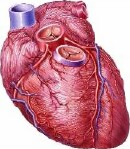
TUESDAY, Sept. 13 (HealthDay News) — Many people born with a heart defect known as bicuspid aortic valve live in fear of sudden death, but a new study finds only a small risk for a life-threatening complication called aortic dissection.
However, these people are at high risk of a different complication — an aortic aneurysm, or bulge in the wall of the aorta, researchers report.
Bicuspid aortic valve, the most common congenital heart defect, occurs when the heart’s aortic valve has only two flaps that open and close rather than the normal three. The aorta, the large blood vessel that carries blood away from the heart, sometimes tears, or dissects, as a result of this defect.
“Aortic complications are real in bicuspid aortic valve disease,” said lead researcher Dr. Hector I. Michelena, an assistant professor of medicine at the Mayo Clinic in Rochester, Minn.
“The risk of dissection is higher than the general population but remains low,” he said. “But both risks of aneurysm and surgery for aneurysm are significantly increased. Despite this, the 25-year survival is not affected in the bicuspid aortic valve disease patient.”
This should reassure these patients, Michelena said.
For the study, published in the Sept. 14 issue of the Journal of the American Medical Association, the researchers examined the medical records of 416 patients diagnosed with bicuspid aortic valve between 1980 and 1999 and looked for complications due to the condition.
Over an average of 16 years’ follow-up, two patients had an aortic dissection, putting the risk at 0.5 percent. Although that risk is 8.4 times higher than for people without bicuspid aortic valve, the absolute risk is very low, Michelena’s group found.
Forty-nine patients in the study developed aneurysms. That puts the risk of developing this problem at 26 percent for these patients, and that’s 86 percent higher than the risk for people who do not have bicuspid aortic valve, the researchers said.
Also, after an aneurysm was found, the risk of aortic surgery over the next 15 years was 46 percent, and the risk of aortic dissection was 7 percent. Over 25 years, the risk of having an operation connected to bicuspid aortic valve was 25 percent, they said.
Those at the highest risk for an aortic dissection were patients over 50 and those with aortic aneurysms, Michelena’s group noted. The 25-year risk for needing a valve replacement — the most common complication — was 53 percent, they added.
Dr. Gregg Fonarow, a professor of cardiology at the University of California, Los Angeles, said that between 1 percent and 2 percent of the population have bicuspid aortic valves. Many patients have no problems, but some develop blockage or leakage of the valve and some have abnormalities of the aorta that may result in aortic dissection. The frequency of this complication has not been well-studied, Fonarow said.
This study indicates that the absolute risk for this problem is very low, at three per 10,000 patient years of follow-up, he said.
“These findings are reassuring and suggest that the rate of aortic dissection among individuals with bicuspid aortic valves, while significantly higher than the general population, are still quite low in absolute terms,” Fonarow said.
More information
For more information on bicuspid aortic valves, visit the U.S. National Library of Medicine.

